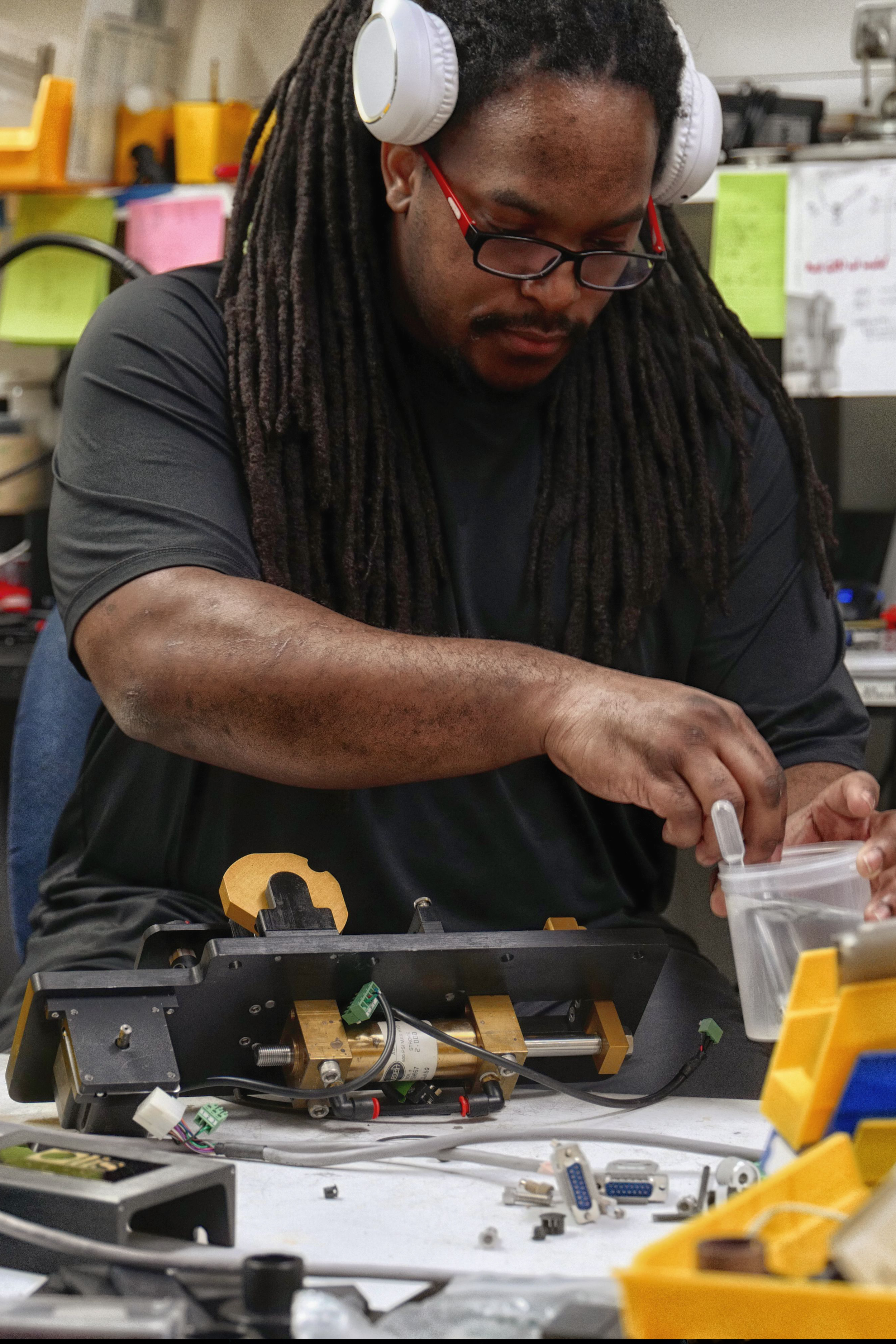The Of Uv/vis/nir
Branch of spectroscopy Table-top spectrophotometer Beckman IR-1 Spectrophotometer, ca. 1941 Beckman Model DB Spectrophotometer (a double beam model), 1960 Hand-held spectrophotometer used in graphic industry Spectrophotometry is a branch of electro-magnetic spectroscopy worried about the quantitative measurement of the reflection or transmission homes of a product as a function of wavelength.
Although spectrophotometry is most commonly applied to ultraviolet, visible, and infrared radiation, contemporary spectrophotometers can interrogate broad swaths of the electromagnetic spectrum, including x-ray, ultraviolet, visible, infrared, and/or microwave wavelengths. Spectrophotometry is a tool that hinges on the quantitative analysis of molecules depending upon just how much light is soaked up by colored substances.
Spectrophotometers Fundamentals Explained
A spectrophotometer is commonly used for the measurement of transmittance or reflectance of services, transparent or nontransparent solids, such as refined glass, or gases. Although numerous biochemicals are colored, as in, they soak up noticeable light and therefore can be measured by colorimetric procedures, even colorless biochemicals can frequently be converted to colored compounds appropriate for chromogenic color-forming responses to yield substances appropriate for colorimetric analysis.: 65 However, they can also be created to determine the diffusivity on any of the listed light ranges that generally cover around 2002500 nm using different controls and calibrations.
An example of an experiment in which spectrophotometry is utilized is the determination of the stability constant of a service. A certain chemical reaction within a solution might take place in a forward and reverse direction, where reactants form products and products break down into reactants. At some time, this chain reaction will reach a point of balance called a stability point.
Some Known Questions About Uv/vis/nir.
The quantity of light that passes through the service is a sign of the concentration of specific chemicals that do not enable light to go through. The absorption of light is due to the interaction of light with the electronic and vibrational modes of particles. Each kind of molecule has an individual set of energy levels related to the makeup of its chemical bonds and nuclei and hence will take in light of specific wavelengths, or energies, leading to distinct spectral residential or commercial properties.
They are widely utilized in many industries consisting of semiconductors, laser and optical production, printing and forensic evaluation, as well as in labs for the research study of chemical substances. Spectrophotometry is typically used in measurements of enzyme activities, determinations of protein concentrations, determinations of enzymatic kinetic constants, and measurements of ligand binding reactions.: 65 Ultimately, a spectrophotometer is able to identify, depending on the control or calibration, what substances are present in a target and precisely how much through calculations of observed wavelengths.
Created by Arnold O. Beckman in 1940 [], the spectrophotometer was developed with the aid of his associates at his business National Technical Laboratories founded in 1935 which would end up being Beckman Instrument Company and ultimately Beckman Coulter. This would come as an option to the formerly created spectrophotometers which were not able to absorb the ultraviolet correctly.
4 Easy Facts About Uv/vis/nir Explained
It would be found that this did not offer acceptable outcomes, therefore in Model B, there was a shift from a glass to a quartz here are the findings prism which enabled better absorbance results - circular dichroism (https://www.callupcontact.com/b/businessprofile/Olis_Clarity/8903776). From there, Design C was born with an adjustment to the wavelength resolution which wound up having 3 units of it produced
It was produced from 1941 to 1976 where the cost for it in 1941 was US$723 (far-UV devices were an option at extra expense). In the words of Nobel chemistry laureate Bruce Merrifield, it was "probably the most essential instrument ever developed towards the development of bioscience." Once it ended up being stopped in 1976, Hewlett-Packard produced the first commercially available diode-array spectrophotometer in 1979 referred to as the HP 8450A. It irradiates the sample with polychromatic light which the sample absorbs depending upon its properties. It is sent back by grating the photodiode variety which finds the wavelength area of the spectrum. Because then, the creation and execution of spectrophotometry gadgets has increased immensely and has actually become one of the most innovative instruments of our time.

10 Simple Techniques For Spectrophotometers
Historically, spectrophotometers utilize a monochromator containing a diffraction grating to produce the analytical spectrum. The grating can either be movable or repaired. If a single detector, such as a photomultiplier tube or photodiode is utilized, the grating can be scanned step-by-step (scanning spectrophotometer) so that the detector can determine the light strength at each wavelength (which will correspond to each "step").
In such systems, the grating is fixed and the intensity of each wavelength of light is measured by a various detector in the range. When making transmission measurements, the spectrophotometer quantitatively compares the portion of light that passes through a reference option and a test solution, then electronically compares the intensities of the two signals and computes the portion of transmission of the sample compared to the recommendation standard.

Comments on “Our Uv/vis PDFs”